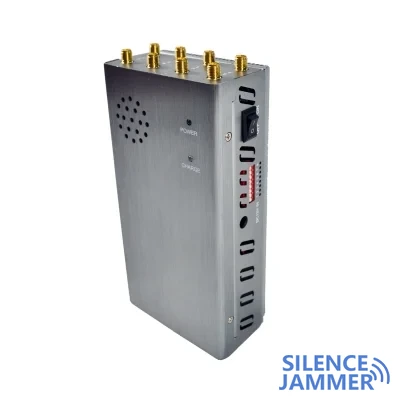The rapid popularization of 5G technology has brought great convenience to our lives. However, at the same time, some people have also begun to pay attention to how to interfere with or block 5G signals. When discussing 5G signal jammers, power is a key technical parameter, which directly affects the effect and scope of application of the jammer. This article will delve into the power issues of 5G signal jammers, including their definition, influencing factors and practical applications.

What is a 5G signal jammer?
A 5G signal jammer is an electromagnetic wave device that emits electromagnetic waves at the same or similar frequency as the 5G signal. Through these electromagnetic waves, jammers can cover and suppress 5G signals, making the target device unable to receive and send data normally. The main components of a jammer include a signal generator, amplifier and antenna.
5G signal jammer power definition
The power of a jammer, usually measured in watts (W) or milliwatts (mW), represents the intensity of the electromagnetic waves emitted by the device. The greater the power, the greater the coverage and strength of the interfering signal. The power of the jammer is determined by the signal generator and amplifier and is emitted through the antenna.
1. Transmission power
Transmit power refers to the actual power of electromagnetic waves emitted by the jammer antenna. This power determines the coverage and strength of the interfering signal. High-power jammers can cover a wider range, but also bring more side effects, such as affecting legitimate communications around them.
2. Output power
Output power refers to the power produced by the signal generator and amplifier inside the jammer. This power will be lost after being transmitted by the antenna, so the actual transmitted power is usually lower than the output power.
Factors affecting the power of 5G signal jammers
1. Frequency range
The frequency range of 5G signals is wide, ranging from low frequency bands (such as 600 MHz) to high frequency bands (such as millimeter wave bands, above 24 GHz). The signal propagation characteristics of different frequency bands are different, and the jammer needs to adjust the power when working in different frequency bands to ensure the interference effect.
2. Environmental factors
Environmental factors include terrain, buildings, meteorological conditions, etc. Complex environments will have an impact on electromagnetic wave propagation, and jammers may require higher power to achieve the desired effect in such environments.
3. Distance
The distance between the jammer and the target device is also an important factor in determining the power level. The farther the distance, the more the electromagnetic wave signal is attenuated during propagation, and the jammer requires higher power to cover the longer range.
4. Interfering with targets
Different target devices have different sensitivity to signal interference. For example, devices such as mobile phones, Wi-Fi routers and drones have different reception sensitivities, and jammers need to adjust their power to specific targets.
Practical applications and power selection
In practical applications, choosing a 5G signal jammer with appropriate power requires comprehensive consideration of many factors. The following are some typical application scenarios and their power selection recommendations:
1. Indoor places
In small indoor venues, such as conference rooms or exam venues, there is usually less area to cover. Low-power jammers (such as tens of milliwatts to hundreds of milliwatts) are usually sufficient to effectively shield the signal without causing too much impact on the outside world.
2. Outdoor places
In large outdoor locations, such as prisons or military bases, higher power jammers (eg, a few watts to tens of watts) may be needed to cover a wider range. At this time, special attention should be paid to power control and environmental effects to ensure safe use.
3. Mobile devices
Vehicle-mounted or portable jammers are typically designed to be moderately powerful (e.g., a few hundred milliwatts to a few watts), capable of providing effective jamming on the move while maintaining low energy consumption and size.
The power of a 5G signal jammer is a key factor that determines its effectiveness and scope of application. When using a jammer, you need to comprehensively consider factors such as frequency range, environmental factors, interference targets, and legal regulations to select appropriate power. At the same time, laws and regulations should be strictly observed to ensure that jammers are used within legal and safe limits. Through scientific and reasonable application, 5G signal jammers can play their due role in specific scenarios to ensure the safety and stability of the communication environment.


